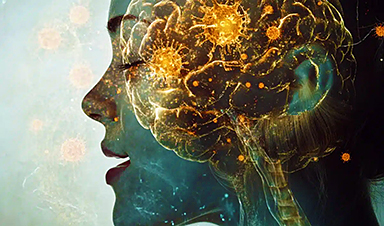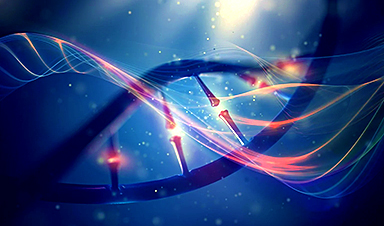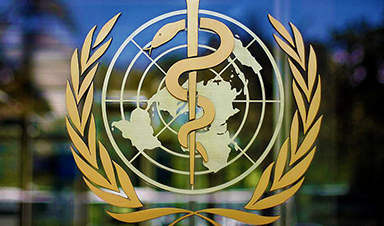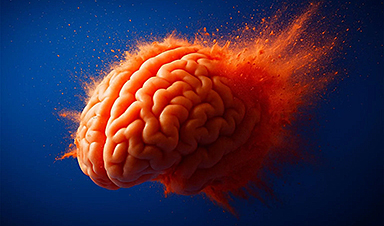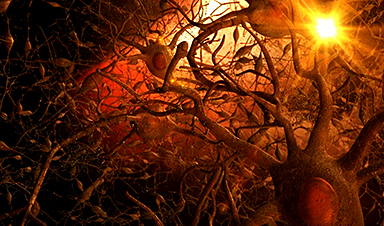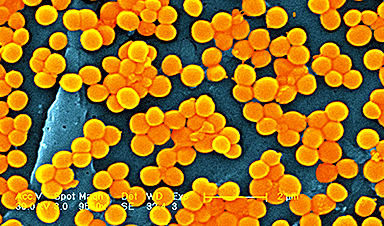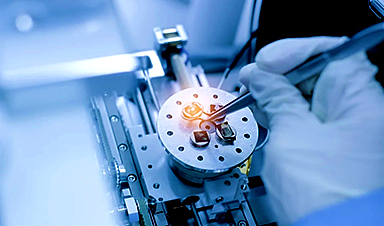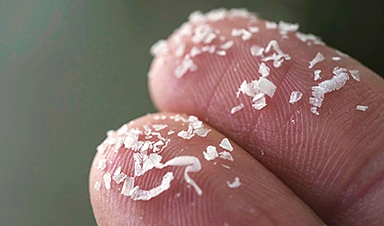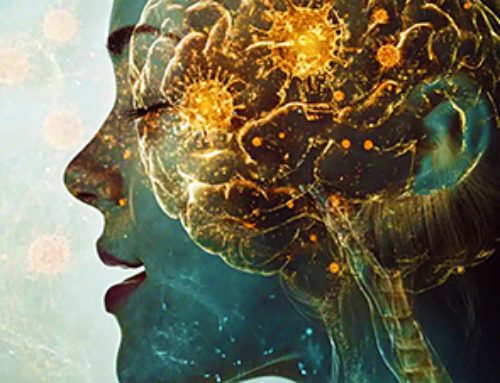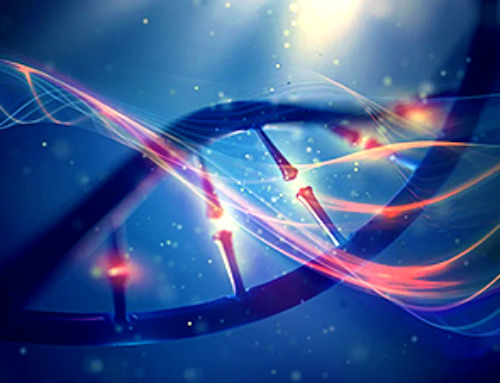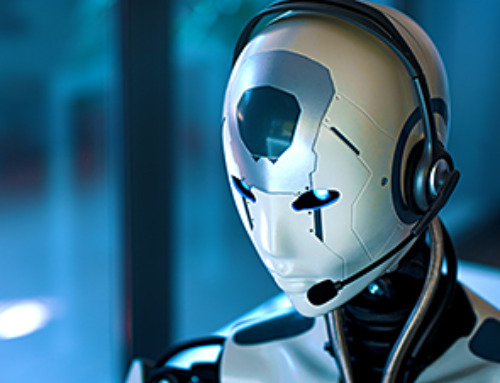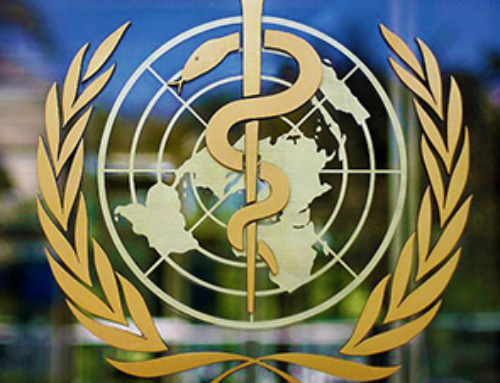Hydrogen gas, dubbed the energy of the future, has been providing energy since 4 billion years ago.
A recent study reveals how hydrogen gas, often touted as the energy source of tomorrow, provided energy in the past, at the origin of life 4 billion years ago. Hydrogen gas is clean fuel. It burns with oxygen in the air to provide energy with no CO2.
Hydrogen is a key to sustainable energy for the future. Though humans are just now coming to realize the benefits of hydrogen gas (H2 in chemical shorthand), microbes have known that H2 is a good fuel for as long as there has been life on Earth. Hydrogen is ancient energy.
The very first cells on Earth lived from H2 produced in hydrothermal vents, using the reaction of H2 with CO2 to make the molecules of life. Microbes that thrive from the reaction of H2 and CO2 can live in total darkness, inhabiting spooky, primordial habitats like deep-sea hydrothermal vents or hot rock formations deep within the Earth’s crust, environments where many scientists think that life itself arose.
Discovery of Hydrogen’s Role in Early Cellular Energy Harvesting
Surprising new insights about how the first cells on Earth came to harness H2 as an energy source are now reported in PNAS. The new study comes from the team of William F. Martin at the University of Düsseldorf and Martina Preiner at the Max Planck Institute (MPI) for Terrestrial Microbiology in Marburg with support from collaborators in Germany and Asia.
In order to harvest energy, cells first have to push the electrons from H2 energetically uphill. “That is like asking a river to flow uphill instead of downhill, so cells need engineered solutions,” explains one of the three first authors of the study, Max Brabender.
Image from the Sulis formation in the Lost City hydrothermal field, an alkaline hydrothermal vent that produces hydrogen. Credit: Courtesy of Susan Lang, U. of South Carolina /NSF/ROV Jason 2018 © Woods Hole Oceanographic Institution
How cells solve that problem was discovered only 15 years ago by Wolfgang Buckel together with his colleague Rolf Thauer in Marburg. They found that cells send the two electrons in hydrogen down different paths. One electron goes far downhill, so far downhill that it sets something like a pulley (or a siphon) in motion that can pull the other electron energetically uphill. This process is called electron bifurcation.
The Mechanisms of Electron Bifurcation and Early Evolutionary Puzzle
In cells, it requires several enzymes that send the electrons uphill to an ancient and essential biological electron carrier called ferredoxin. The new study shows that at pH 8.5, typical of naturally alkaline vents, “no proteins are required,” explains Buckel, co-author on the study, “the H–H bond of H2 splits on the iron surface, generating protons that are consumed by the alkaline water and electrons that are then easily transferred directly to ferredoxin.”
How an energetically uphill reaction could have worked in early evolution, before there were enzymes or cells, has been a very tough puzzle. “Several different theories have proposed how the environment might have pushed electrons energetically uphill to ferredoxin before the origin of electron bifurcation,“ says Martin, “we have identified a process that could not be simpler and that works in the natural conditions of hydrothermal vents”.
Since the discovery of electron bifurcation, scientists have found that the process is both ancient and absolutely essential in microbes that live from H2. The vexing problem for evolutionarily-minded chemists like Martina Preiner, whose team in Marburg focusses on the impact of the environment on reactions that microbes use today and possibly used at life’s origin, is: How was H2 harnessed for CO2 fixing pathways before there were complicated proteins?
“Metals provide answers,”, she says, “at the onset of life, metals under ancient environmental conditions can send the electrons from H2 uphill, and we can see relicts of that primordial chemistry preserved in the biology of modern cells.” But metals alone are not enough. “H2 needs to be produced by the environment as well” adds co-first author Delfina Pereira from Preiner’s lab. Such environments are found in hydrothermal vents, where water interacts with iron-containing rocks to make H2, and where microbes still live today from that hydrogen as their source of energy.
The Surprising Role of Hydrogen in Forming Metallic Iron
Hydrothermal vents, both modern and ancient, generate H2 in such large amounts that the gas can turn iron-containing minerals into shiny metallic iron.
“That hydrogen can make metallic iron out of minerals is no secret,” says Harun Tüysüz, expert for high-tech materials at the Max-Planck-Institut für Kohlenforschung Mülheim and coauthor on the study. “Many processes in the chemical industry use H2 to make metals out of minerals during the reaction.” The surprise is that nature does this too, especially at hydrothermal vents, and that this naturally deposited iron could have played a crucial role at the origin of life.
Iron was the only metal identified in the new study that was able to send the electrons in H2 uphill to ferredoxin. But the reaction only works under alkaline conditions like those in a certain type of hydrothermal vents.
Natalia Mrnjavac from the Düsseldorf group and co-first author on the study points out: “This fits well with the theory that life arose in such environments. The most exciting thing is that such simple chemical reactions can close an important gap in understanding the complex process of origins, and that we can see those reactions working under the conditions of ancient hydrothermal vents in the laboratory today.”
Reference: “Ferredoxin reduction by hydrogen with iron functions as an evolutionary precursor of flavin-based electron bifurcation” by Max Brabender, Delfina P. Henriques Pereira, Natalia Mrnjavac, Manon Laura Schlikker, Zen-Ichiro Kimura, Jeerus Sucharitakul, Karl Kleinermanns, Harun Tüysüz, Wolfgang Buckel, Martina Preiner and William F. Martin, 21 March 2024, Proceedings of the National Academy of Sciences.
DOI: 10.1073/pnas.2318969121
News
Cold Sore Virus Linked to Alzheimer’s, Antivirals May Lower Risk
Summary: A large study suggests that symptomatic infection with herpes simplex virus 1 (HSV-1)—best known for causing cold sores—may significantly raise the risk of developing Alzheimer’s disease. Researchers found that people with HSV-1 were 80% [...]
Nanoparticle-Based Combination Therapy for Resistant Melanoma
A recent study published in Small addresses the persistent difficulty of treating refractory melanoma, an aggressive form of skin cancer that often does not respond to existing therapies. Although diagnostic tools and immunotherapies have improved in [...]
Our DNA May Evolve Much Faster Than Previously Thought
Rapidly mutating DNA regions were mapped using a multi-generational family and advanced sequencing tools. Understanding how human DNA changes over generations is crucial for estimating genetic disease risks and tracing our evolutionary history. However, some of [...]
AI therapy may help with mental health, but innovation should never outpace ethics
Mental health services around the world are stretched thinner than ever. Long wait times, barriers to accessing care and rising rates of depression and anxiety have made it harder for people to get timely help. As a result, governments and health care providers are [...]
Global life expectancy plunges as WHO warns of deepening health crisis Post-COVID
The World Health Organization (WHO) has sounded the alarm on the long-term health repercussions of the COVID-19 pandemic in its newly released World Health Statistics Report 2025. The report reveals a staggering decline in global [...]
Researchers map brain networks involved in word retrieval
How are we able to recall a word we want to say? This basic ability, called word retrieval, is often compromised in patients with brain damage. Interestingly, many patients who can name words they [...]
Melting Ice Is Changing the Color of the Ocean – Scientists Are Alarmed
Melting sea ice changes not only how much light enters the ocean, but also its color, disrupting marine photosynthesis and altering Arctic ecosystems in subtle but profound ways. As global warming causes sea ice in the [...]
Your Washing Machine Might Be Helping Antibiotic-Resistant Bacteria Spread
A new study reveals that biofilms in washing machines may contain potential pathogens and antibiotic resistance genes, posing possible risks for laundering healthcare workers’ uniforms at home. Washing healthcare uniforms at home could be [...]
Scientists Discover Hidden Cause of Alzheimer’s Hiding in Plain Sight
Researchers found the PHGDH gene directly causes Alzheimer’s and discovered a drug-like molecule, NCT-503, that may help treat the disease early by targeting the gene’s hidden function. A recent study has revealed that a gene previously [...]
How Brain Cells Talk: Inside the Complex Language of the Human Mind
Introduction The human brain contains nearly 86 billion neurons, constantly exchanging messages like an immense social media network, but neurons do not work alone – glial cells, neurotransmitters, receptors, and other molecules form a vast [...]
Oxford study reveals how COVID-19 vaccines prevent severe illness
A landmark study by scientists at the University of Oxford, has unveiled crucial insights into the way that COVID-19 vaccines mitigate severe illness in those who have been vaccinated. Despite the global success of [...]
Annual blood test could detect cancer earlier and save lives
A single blood test, designed to pick up chemical signals indicative of the presence of many different types of cancer, could potentially thwart progression to advanced disease while the malignancy is still at an early [...]
How the FDA opens the door to risky chemicals in America’s food supply
Lining the shelves of American supermarkets are food products with chemicals linked to health concerns. To a great extent, the FDA allows food companies to determine for themselves whether their ingredients and additives are [...]
Superbug crisis could get worse, killing nearly 40 million people by 2050
The number of lives lost around the world due to infections that are resistant to the medications intended to treat them could increase nearly 70% by 2050, a new study projects, further showing the [...]
How Can Nanomaterials Be Programmed for Different Applications?
Nanomaterials are no longer just small—they are becoming smart. Across fields like medicine, electronics, energy, and materials science, researchers are now programming nanomaterials to behave in intentional, responsive ways. These advanced materials are designed [...]
Microplastics Are Invading Our Arteries, and It Could Be Increasing Your Risk of Stroke
Higher levels of micronanoplastics were found in carotid artery plaque, especially in people with stroke symptoms, suggesting a potential new risk factor. People with plaque buildup in the arteries of their neck have been [...]

